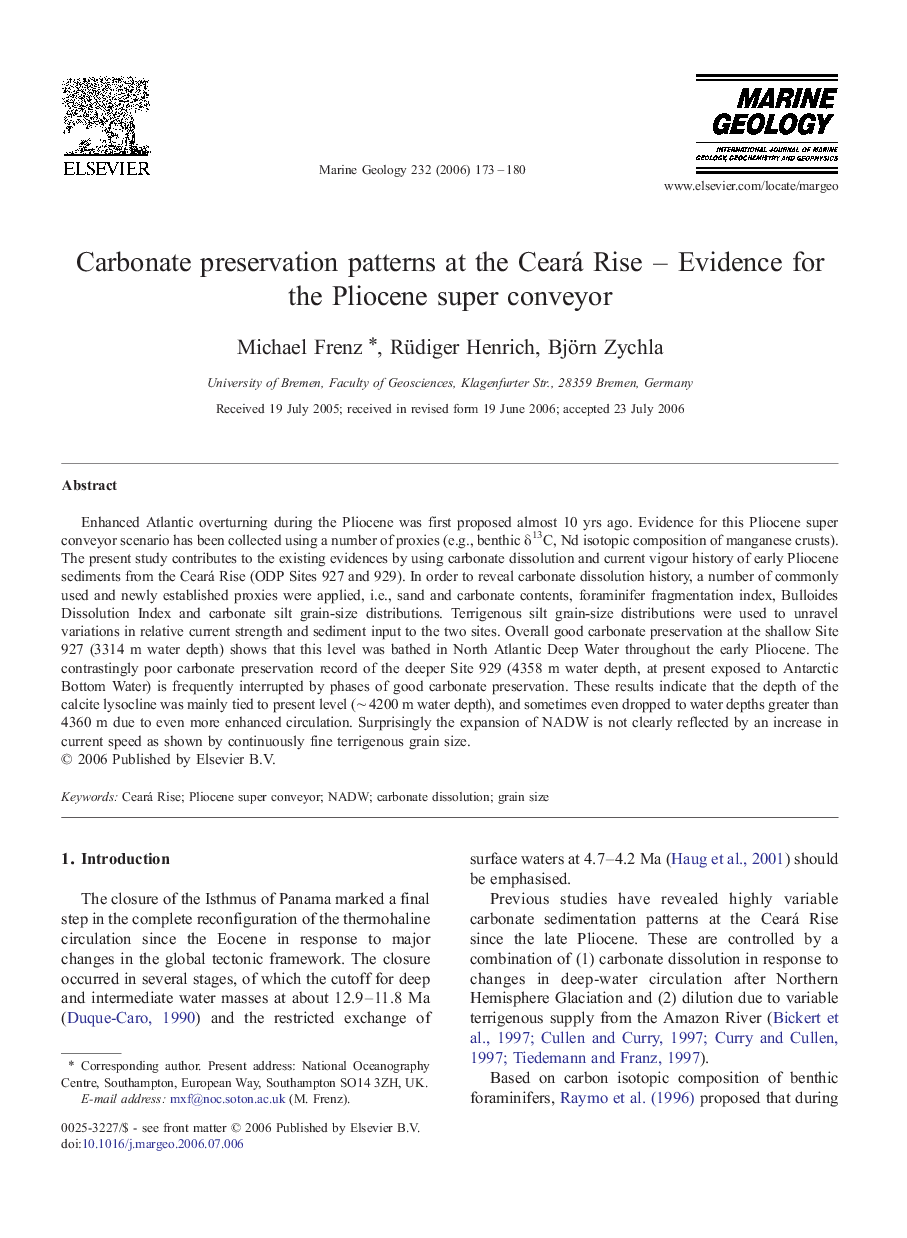| Article ID | Journal | Published Year | Pages | File Type |
|---|---|---|---|---|
| 4719664 | Marine Geology | 2006 | 8 Pages |
Enhanced Atlantic overturning during the Pliocene was first proposed almost 10 yrs ago. Evidence for this Pliocene super conveyor scenario has been collected using a number of proxies (e.g., benthic δ13C, Nd isotopic composition of manganese crusts). The present study contributes to the existing evidences by using carbonate dissolution and current vigour history of early Pliocene sediments from the Ceará Rise (ODP Sites 927 and 929). In order to reveal carbonate dissolution history, a number of commonly used and newly established proxies were applied, i.e., sand and carbonate contents, foraminifer fragmentation index, Bulloides Dissolution Index and carbonate silt grain-size distributions. Terrigenous silt grain-size distributions were used to unravel variations in relative current strength and sediment input to the two sites. Overall good carbonate preservation at the shallow Site 927 (3314 m water depth) shows that this level was bathed in North Atlantic Deep Water throughout the early Pliocene. The contrastingly poor carbonate preservation record of the deeper Site 929 (4358 m water depth, at present exposed to Antarctic Bottom Water) is frequently interrupted by phases of good carbonate preservation. These results indicate that the depth of the calcite lysocline was mainly tied to present level (∼ 4200 m water depth), and sometimes even dropped to water depths greater than 4360 m due to even more enhanced circulation. Surprisingly the expansion of NADW is not clearly reflected by an increase in current speed as shown by continuously fine terrigenous grain size.
